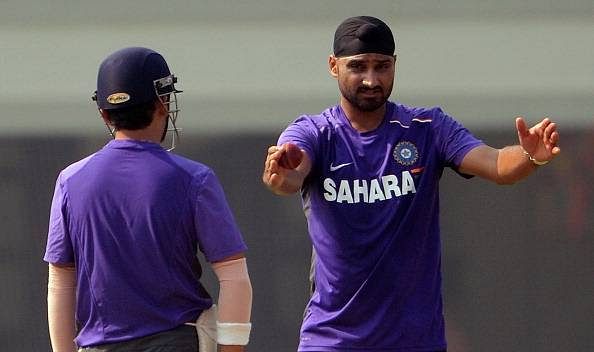
The selection of Harbhajan Singh presents a problem for Indian Cricket

One of the most recently talked about stories is the return of Harbhajan Singh into the Indian Cricket Test team touring Bangladesh. The tenability and feasibility of his selection back into the Indian team is a debatable issue, one that has not found many takers because of the move’s sentimental value. There is hardly any precedent of a cricketer who has played more than 100 Test matches, coming back after being dropped and going on to play for his country for a length of time.
However, the real issue lies in the fact that Harbhajan turns 35 this July, an age where most cricketers start contemplating the end of their careers, and for a selection committee to go back to Bhajji after they had all but bid him goodbye when he was 33 highlights a crisis that might take a lot of work to resolve.
The example of Virender Sehwag’s showing in the recently concluded IPL is a warning. It seemed that age had finally caught up with the Nawab more than anything else. Nevertheless, the effort of Bhajji in the recently concluded IPL where he happened to bag 16 wickets in 14 games is an applaudable and a commendable one. Further what has been impressive about his performance is the qualitative aspect of his bowling. He has been flighting the ball consistently and has been picking up wickets when needed the most.
What tilted the scales in Bhajji’s favour?
Interestingly, Bhajji does not find a place in the ODI squad touring Bangladesh which makes his return more puzzling, for much of his success in recent times has come in limited overs cricket, particularly in the IPL 8. Noteworthy is the fact that his first class record this season hasn’t been impressive enough for the selectors to take into consideration.
Ravi Shastri, recently appointed Team Director, remarks that Harbhajan has bowled like a Test spinner this season; “He’s bowled slower, enticing batsmen into making mistakes, which is a big difference from previous years when he was quicker and flatter, almost as if wickets didn’t matter so much as long as he was not hit for runs.’’
Even though on paper it is just one Test match, chief selector Sandeep Patil has reasoned that the primary reason for selecting Bhajji is that Bangladesh has a lot of left-handers, and hence the need for two off spinners with R Ashwin pairing with Harbhajan. His selection, however, is in stark contrast to what the selection committee has stood up for in the past. The Committee comprising of Patil, Vikram Rathore, Rajinder Hans, Saba Karim and Roger Binny have always stressed on youth and have also been the reason for the exits of many senior players such as Gautam Gambhir, Zaheer Khan and Virender Sehwag. So what exactly tilted the choice in Bhajji’s favour?
No more producing spinners at will
The answer lies in the distressing failure of other spinners in the Indian Test team to take wickets regularly, especially during tours in foreign soil. Bhajji’s entry into the team is at the expense of Jadeja, who has been sidelined having done little of note in the past year or so. Also the return of Bhajji is a testament of the fact that there are simply not enough good spinners going around unlike previous times where there would be at least half a dozen spinners for the selectors to choose from.
Noteworthy is the fact that apart from Yuzvendra Chahal, the witty and gritty leggie, there isn’t any other youngster who has grabbed the attention of Indian fans. Pawan Negi and Jagadeesha Suchith have only provided us with glimmers of hope. Amit Mishra, Piyush Chawla and Pragyan Ojha have been in and out of the team and it seems that they have fallen out of favour with the selectors. Spinners Axar Patel and Karn Sharma have also been tried but without much success.
Harbhajan’s selection only highlights the lack of quality spinners in a country that has always produced them at will. The reason for the scarcity can be manifold – the IPL and T20 cricket, where spinners usually resort to bowl flatter and with more pace, thereby sacrificing flight and spin. Thus, it follows as a necessary corollary that such bowlers are not made for Test cricket.
Other reasons could include the nature of pitches in domestic cricket and lack of guidance. It could be none of this or all of this but it’s crucial for the BCCI to identify the problem and find the solution quickly. Bhajji will surely be without a doubt a success in Bangladesh but he does not have many years left in him, which necessarily implies that the BCCI has even shorter time to end this paucity of quality Test spinners.